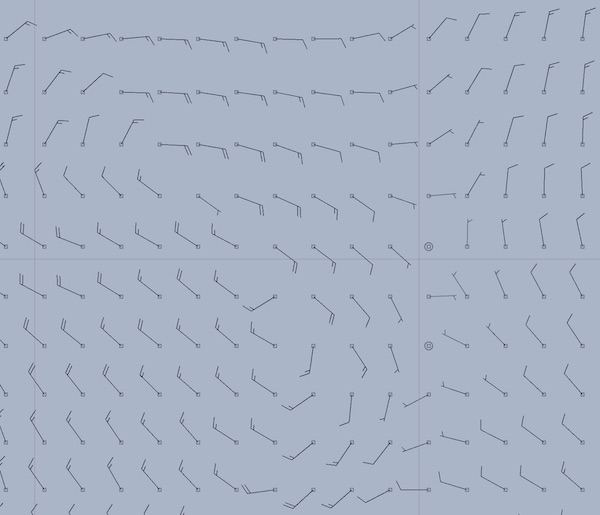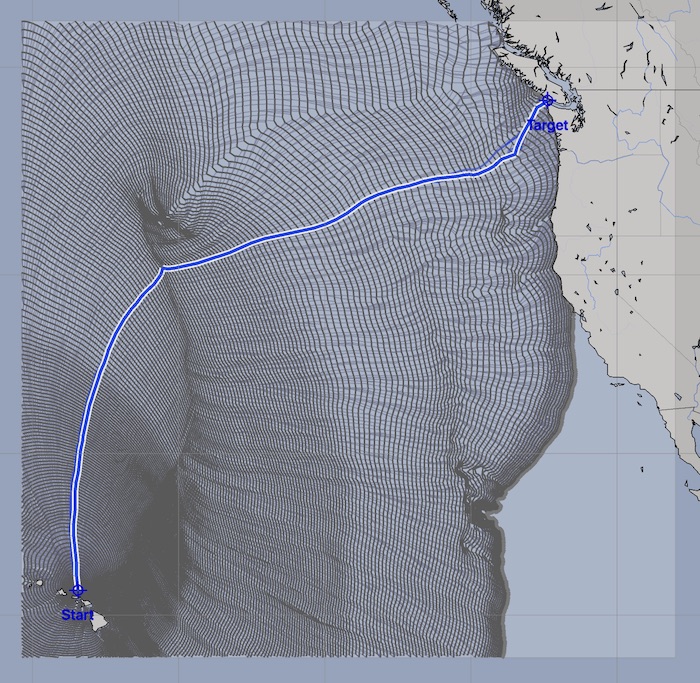Sailors may remember the first time they saw a wind barb symbol being used to represent the wind speed and direction:

It probably took a little while to learn how to read a field of wind barbs and understand what it is telling you. After a little practice, you can learn to easily read wind barb fields.
Isochrones can also be read. Consider the isochrone solution space shown from the previous topic:

The isochrones are one of the tools you can use to see the weather conditions a boat encounters along all of the various paths it could take. There are additional tools in LuckGrib to help you understand the weather conditions, but the isochrone shape is the first one.
In the NW portion of this image there is a region where all of the isochrones are pinched together - north of where the vessel tacks to head more directly east. This represents an area of light wind where the boat slows down. There is another light wind patch in the SE portion of the isochrones. Areas where the isochrones are more widely spaced represent faster boat speeds.
Isochrone zippers.
There is an isochrone zipper in the section radiating out from the NW light wind area, extending NE and then ENE. These zippers are areas where you need to be careful reading the paths that are being generated, as zippers are areas of extreme sensitivity. When around a zipper, a small change in location can lead to very large changes in the path shown to arrive there. In this case, the paths used to arrive in the zipper region will either head north around the light wind, or south around it.
Learning to read isochrones is a skill you will build up, with practice, if you choose to do so.